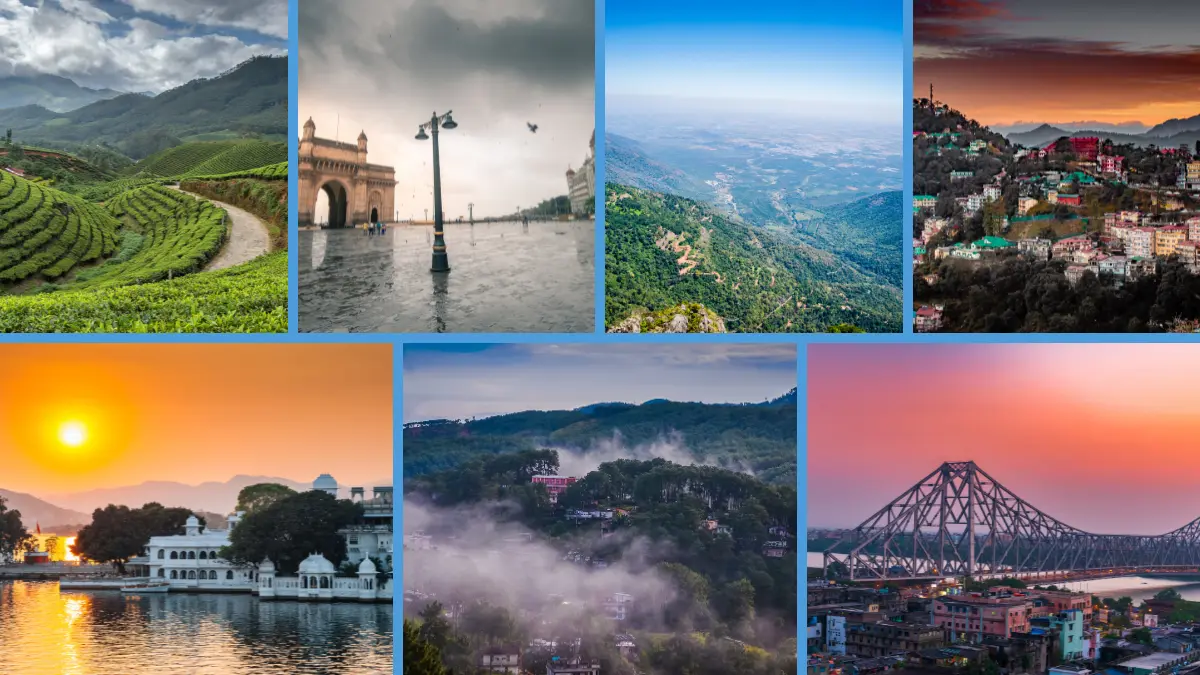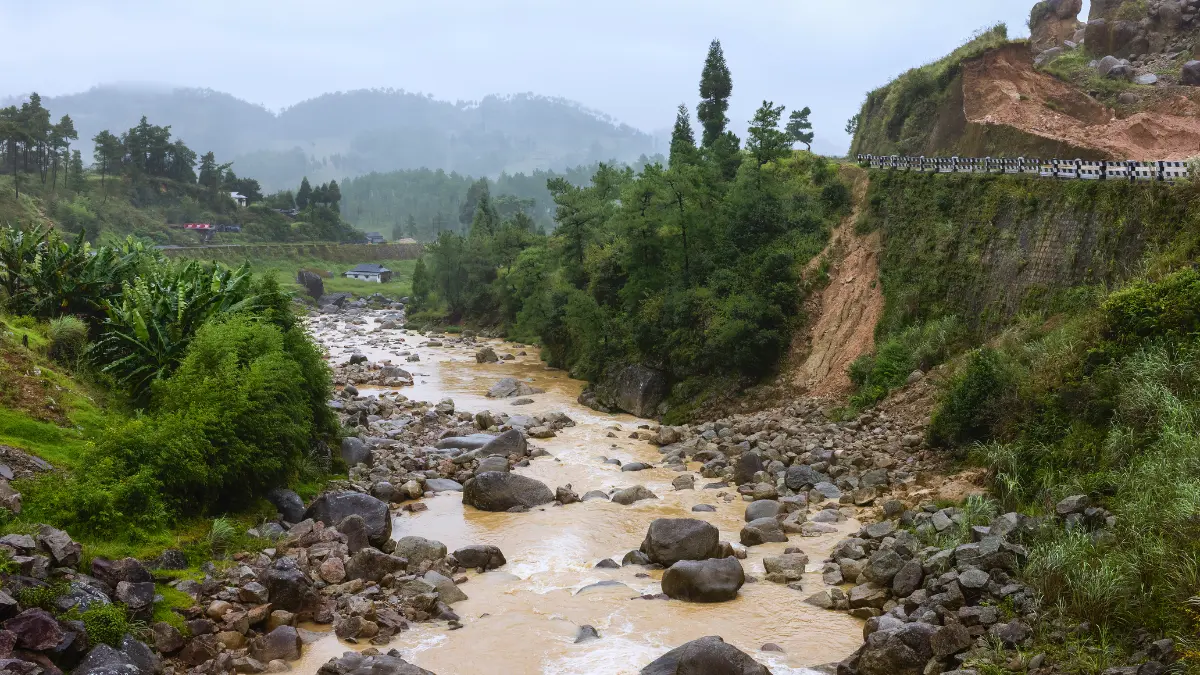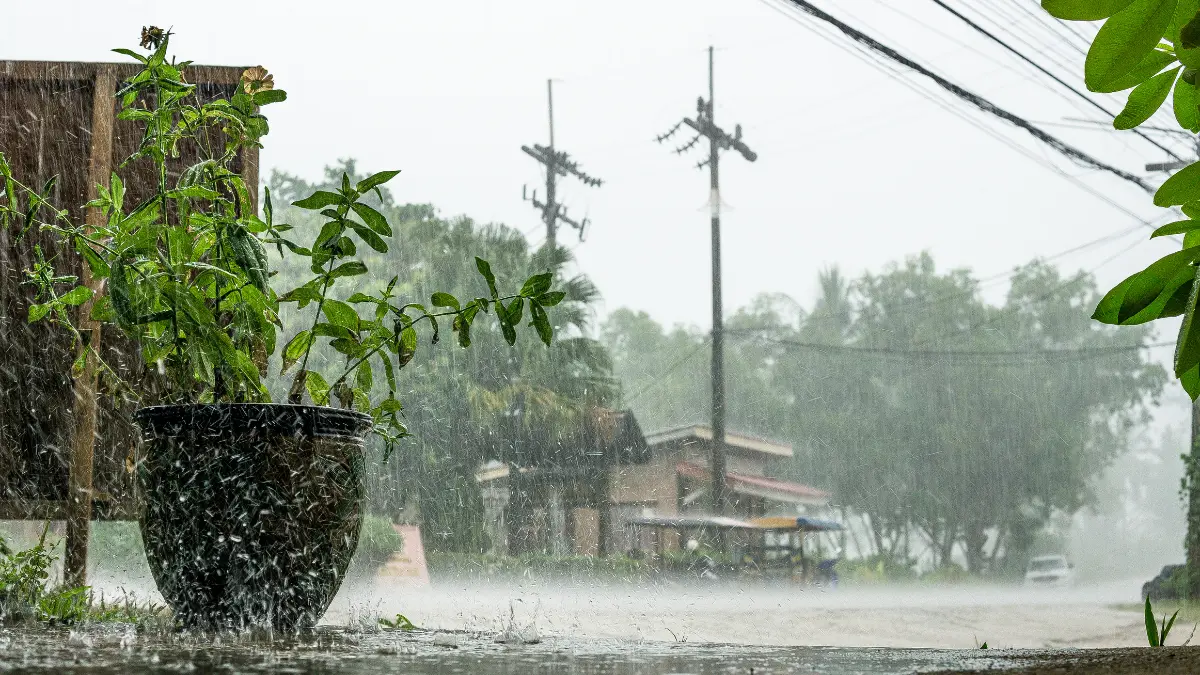As the monsoon clouds sweep across India, they create a stunning scene of lush greenery and flowing waterfalls. However, this season can also turn beautiful spots into tricky travel destinations. The heavy rains and swollen rivers can transform peaceful places into challenging environments, with roads turning into rivers and views hidden by downpours. In this travel advisory, we’ll highlight seven Indian destinations where the monsoon might be better enjoyed from a distance. By avoiding these rain-soaked spots, you can keep your travels smooth and safe. So, get ready as we guide you through these rainy travel tips, helping you stay prepared for a season full of both beauty and challenges.
Table of Contents
The main reasons for issuing travel advisory during this time-

Travel advisories during the monsoon season are issued primarily due to several significant reasons. Firstly, heavy rains can lead to widespread flooding, which disrupts transportation and damages infrastructure, making travel dangerous and often impossible. Roads and railways may become submerged or washed out, leading to delays and cancellations. Secondly, the monsoon season brings with it an increased risk of waterborne diseases, such as cholera and dengue fever, which thrive in stagnant water. This health risk necessitates caution and preparedness for travellers. Additionally, landslides and erosion are common in hilly areas during intense rainfall, posing further hazards. Finally, the sheer volume of rain can obscure natural landmarks and reduce visibility, making navigation and sightseeing challenging. These factors collectively prompt travel advisories to ensure that travellers are informed and prepared for the potential difficulties of navigating during the monsoon season.
Floods and Their Impact
Imagine a serene river suddenly breaking its bounds, morphing peaceful streets into raging torrents and lush fields into vast lakes. This is the sheer force of monsoon floods. Intense rainfall can transform a quiet town into a waterlogged nightmare, where roads become submerged and homes are overwhelmed by rising waters. Recent events underscore this devastating reality.
In July 2024, the northeastern state of Manipur faced unprecedented flooding after relentless rains led to the overflowing of the Imphal River. Entire neighbourhoods were submerged, with residents forced to evacuate their homes. The heavy rains caused severe damage to infrastructure, including roads and bridges, and disrupted essential services, leaving communities struggling with the aftermath.
Similarly, Maharashtra witnessed severe flooding in August 2024 when heavy monsoon showers inundated Mumbai and surrounding areas. The city’s streets turned into rivers, and numerous areas experienced significant waterlogging, leading to disruptions in transportation and daily life. This flooding led to the collapse of several buildings and infrastructure, further exacerbating the chaos and making recovery efforts challenging.
These recent incidents highlight the immense risks and disruptions that floods bring, from damaged infrastructure to devastated homes and disrupted lives. As floods continue to affect various parts of India, they underscore the urgent need for preparedness and resilience in the face of such natural disasters
Understanding the Monsoon Season in India
The monsoon season in India is like a grand symphony of rain and thunder, orchestrated by nature itself. Spanning from June to September, this annual event brings much-needed relief to the parched landscapes of the subcontinent. As the southwest monsoon winds carry moisture-laden clouds across India, the country experiences a dramatic shift from dry to drenched. The rains can rejuvenate the land, filling rivers and reservoirs, but they can also unleash nature’s fury, causing widespread disruptions.
During this period, the country witnesses heavy, often torrential, rainfall that can lead to severe flooding, landslides, and transportation breakdowns. Cities and rural areas alike can face significant challenges as the rain transforms roads into rivers and fields into lakes.
7 Places to Avoid in India During the Monsoon season

Wayanad, Kerala
Known for its lush green hills and picturesque landscapes, Wayanad becomes a different world during the monsoon. The recent heavy rains in July 2024 caused severe flooding and landslides in the region. Roads leading to popular tourist spots like Edakkal Caves and Banasura Sagar Dam were blocked due to landslides, making travel perilous.
Mumbai, Maharashtra
The financial capital of India, Mumbai, often struggles with intense monsoon rains. In August 2024, the city faced significant flooding, with streets submerged under several feet of water and severe traffic disruptions. The monsoon’s impact on infrastructure and public services can make travel within the city challenging.
Chennai, Tamil Nadu
Chennai, with its low-lying areas, is prone to flooding during the monsoon. Recent reports from September 2024 highlight significant waterlogging and transportation issues. The city’s infrastructure struggles to cope with the intense rainfall, making it less ideal for travel during this period.
Shimla, Himachal Pradesh
The scenic hill station of Shimla experiences heavy rainfall and landslides during the monsoon. Recent news from July 2024 reported road closures and disrupted services due to landslides in the region, posing risks for travellers navigating the hilly terrain.
Udaipur, Rajasthan
Although known for its beautiful lakes, Udaipur can be adversely affected by monsoon rains. In August 2024, the city experienced flooding in several low-lying areas, affecting local transportation and travel plans.
Shillong, Meghalaya
Shillong, nestled in the Northeast, receives heavy rains that often lead to flooding and landslides. Recent events from July 2024 indicated significant disruptions in transportation and accessibility due to the intense monsoon rains.
Kolkata, West Bengal
Kolkata’s monsoon season can bring heavy downpours that lead to waterlogging and traffic issues. In September 2024, the city faced severe flooding, with several neighbourhoods submerged, making travel within the city challenging.
Roadblocks and Transportation Issues
During the monsoon season in India, floods and heavy rains can transform travel into a daunting ordeal. The relentless downpours often lead to widespread flooding, submerging roads and creating dangerous driving conditions. When water levels rise, roads become impassable, and traffic snarls can last for hours. Recent reports highlight severe disruptions: in July 2024, heavy rains in Mumbai led to the closure of several major roads due to flooding, causing massive traffic jams and stranding commuters.
Railways are not immune to the monsoon’s wrath. Floodwaters can inundate tracks, leading to cancellations and delays. For instance, in August 2024, the railway network in Assam experienced significant disruptions after incessant rains caused riverbanks to overflow, submerging tracks and halting train services. Such interruptions affect not only passenger trains but also the freight network, impacting supply chains and cargo deliveries.
Air travel also faces challenges during the monsoon. Stormy weather and poor visibility can result in delays and cancellations of flights. Airports, especially those in regions prone to flooding, may experience operational difficulties. Recently, Delhi’s Indira Gandhi International Airport saw a surge in flight delays and cancellations due to heavy rain and reduced visibility, affecting thousands of travellers.
Overall, the monsoon season’s impact on transportation underscores the need for travellers to stay informed about weather conditions and be prepared for potential disruption
Health and Safety Concerns

Travelling during the monsoon season can be as challenging as navigating a minefield, with various health risks emerging alongside the logistical hassles. Here’s a detailed look at what you need to consider:
- Waterborne Diseases: The increase in stagnant water creates ideal conditions for the spread of waterborne diseases. Cholera, hepatitis A, and typhoid fever are common risks during this season. Ensure you drink only bottled or boiled water and avoid raw or undercooked foods.
- Vector-Borne Diseases: Heavy rains and accumulated water serve as breeding grounds for mosquitoes, raising the risk of diseases like dengue fever and malaria. Use insect repellent, wear long-sleeved clothing, and sleep under a mosquito net if necessary.
- Fungal Infections: The high humidity and damp conditions prevalent during the monsoon can lead to fungal infections like athlete’s foot and ringworm. Keep your skin dry, use antifungal creams if needed, and avoid walking barefoot in wet areas.
- Respiratory Issues: The damp, humid air can exacerbate respiratory problems such as asthma and bronchitis. Carry necessary medications, avoid exposure to mould and damp environments, and consult a doctor if you experience respiratory distress.
Travel Health Precautions:
- Medications: Pack a travel health kit including antibiotics, anti-diarrheal medicines, and antihistamines.
- Sanitation: Carry hand sanitizers and wipes to maintain hygiene, especially when access to clean facilities is limited.
- Weather Alerts: Stay updated with local weather conditions and health advisories to avoid areas prone to outbreaks or flooding.
Recent Health Alerts in India:
- Kerala: In August 2024, Kerala reported a surge in waterborne diseases following severe floods. Precautions are crucial in affected areas to prevent outbreaks.
- Mumbai: Heavy rains in Mumbai have led to increased cases of dengue fever. The city’s health departments have issued warnings about mosquito-borne diseases.
Travelling during the monsoon season requires careful preparation to ensure your health and safety. By following these precautions, you can mitigate risks and navigate the challenges of monsoon travel more effectively.
Alternate Destinations to Explore in India During the Monsoon

If the monsoon rains are putting a damper on your travel plans, consider these alternatives to escape the seasonal downpours:
Explore Arid Regions:
- Rajasthan: The desert landscapes of Rajasthan, including cities like Jaisalmer, Bikaner, and Jodhpur, experience minimal rainfall and offer a dry escape from the monsoon. Enjoy camel rides, historic forts, and vibrant local culture.
- Gujarat: Cities like Kutch and the Rann of Kutch remain largely unaffected by the monsoon. Experience traditional crafts, desert festivals, and stunning landscapes.
Discover Himalayan Foothills:
- Shimla and Manali: These popular hill stations offer cooler weather and are often less impacted by heavy rains. Enjoy scenic views, hiking, and adventure activities in the Himalayan foothills.
- Dharamshala and McLeod Ganj: Known for their Tibetan culture and serene environment, these areas provide a peaceful retreat from the monsoon chaos.
Urban Getaways:
- Indoor Attractions: Visit museums, art galleries, and historical sites in cities less affected by the monsoon, such as Ahmedabad or Pune. Explore cultural heritage and modern attractions without worrying about the weather.
- Culinary Tours: Indulge in gastronomic delights by exploring local eateries and restaurants. Cities like Delhi, Bangalore, and Kolkata offer diverse culinary experiences and are relatively unaffected by the monsoon.
Beach Retreats (with Caution):

- Goa: While Goa does experience monsoon rains, certain areas might be less impacted. Enjoy indoor activities and relax in beach resorts with good weather conditions.
- Kochi: Known for its backwaters and cultural heritage, Kochi offers a unique blend of experiences, though some areas may still be affected by seasonal rains.
Staycation Options:
- Local Escapes: Consider a staycation at local resorts or hotels with indoor amenities and activities. Enjoy a relaxing break without the need to travel far.
Cultural Experiences:
- Festivals and Events: Check for local festivals, fairs, or events happening in areas less affected by the monsoon. Immerse yourself in local culture and traditions
Preparing for Unavoidable Travel During the Monsoon

If you find yourself needing to travel during this tempestuous season, preparation is crucial. Here’s how to ensure a smoother journey amidst the rain:
- Pack Essentials:
- Waterproof Gear: Include raincoats, umbrellas, and waterproof bags to keep your belongings dry.
- Travel Insurance: Opt for comprehensive travel insurance that covers weather-related disruptions.
- Emergency Supplies: Carry a first aid kit, essential medications, and non-perishable snacks.
- Power Backup: Pack portable chargers and extra batteries for your electronic devices.
- Stay Informed:
- Weather Updates: Regularly check real-time weather forecasts and alerts from reliable sources such as the Meteorological Department or local news channels.
- Travel Advisories: Monitor travel advisories for your destination to stay informed about any travel restrictions or safety concerns.
- Plan Ahead:
- Route Planning: Choose routes that are less likely to be affected by floods and landslides. Have alternative routes planned in case of road closures.
- Accommodation: Book accommodations that have flood protection and are located in safer areas. Confirm your booking and check for any weather-related changes.
- Health Precautions:
- Safe Drinking Water: Carry water purification tablets or a portable water filter to avoid waterborne diseases.
- Hygiene Products: Pack hand sanitizers and disinfectant wipes to maintain hygiene in damp conditions.
- Travel Documents:
- Keep Documents Safe: Store important travel documents, such as passports, tickets, and hotel confirmations, in waterproof pouches.
- Local Contacts:
- Emergency Contacts: Keep a list of local emergency contacts and the nearest medical facilities.
- Travel Smart:
- Avoid Night Travel: If possible, avoid travelling at night when visibility is poor and the risk of accidents is higher.
- Flexible Itinerary: Allow for flexibility in your travel plans to accommodate any unforeseen delays or changes.
By preparing thoroughly and staying informed, you can navigate the monsoon season with greater ease and ensure a safer and more comfortable journey.
As the monsoon rains drape India in its transformative embrace, turning landscapes and routines upside down, it’s essential to travel with a blend of caution and preparation. While the rain can be a refreshing shift, it also poses challenges that could turn a dream journey into a soggy ordeal. By following this advisory and planning wisely, you can better navigate the season’s unpredictability. Share your monsoon travel experiences and tips, and together, let’s face the storm with informed decisions and resilience.



